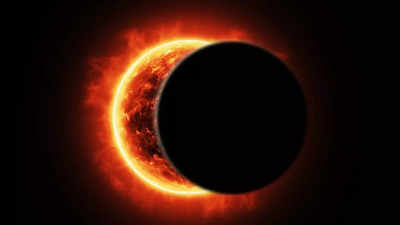As the new moon will partially obscure the rising sun on the morning of Saturday, March 29, 2025 a breathtaking partial solar eclipse will be observed in a rare celestial spectacle. While the event itself is remarkable, the appearance of “solar horns” will make it even more extraordinary. Solar horn or ‘devil horn’ is a striking visual effect where the sun briefly resembles two glowing points on the horizon.
The partial solar eclipse
Unlike a total solar eclipse, this event will never fully block the sun, meaning eclipse glasses or solar filters will be necessary at all times. The eclipse will be visible across parts of North America and Europe, beginning in the U.S. between 6:13 and 7:17 a.m. EDT and in Canada between 6:56 a.m. NDT and 8:20 a.m. EDT. Western Europe will see it later in the morning.

Representative Image
In the U.S., 13 northeastern states—including Maine, New York, and Pennsylvania—will experience the partial eclipse. However, the most dramatic views will be along the northeastern coastline. Experts say that areas that have an unobstructed view of the eastern horizon, such as coastal regions and high elevations will offer the best view.
The ‘Devil’s Horns’ phenomenon
As mentioned earlier the greatest takeaway from this partial solar eclipse will be the appearance of the “devil’s horns” or “solar horns”. This event occurs when the sun, already partially eclipsed by the moon, rises in the form of two separate points of light instead of a full disk.
The solar horns are caused by the moon blocking the center of the sun’s light while its edges remain visible. Atmospheric distortion near the horizon may further stretch or flatten the horns. The entire effect is both surreal and mesmerizing.
Where to see the ‘Solar Horns’
This rare phenomenon will be visible in southeastern Quebec and southwest New Brunswick in Canada, as well as in northern Maine in the U.S. As per reports, locations between the St. Lawrence River estuary and the Bay of Fundy will especially offer the best views. Coastal areas, elevated terrains, and places with a low, unobstructed horizon are ideal viewing spots.
For those planning to witness the event, tools like Xavier Jubier’s interactive Google Map (which includes sightlines from Peak Finder), The Photographer’s Ephemeris, and Timeanddate.com’s eclipse map can help pinpoint the perfect location. A compass will also be useful for ensuring the best alignment with the rising sun.






